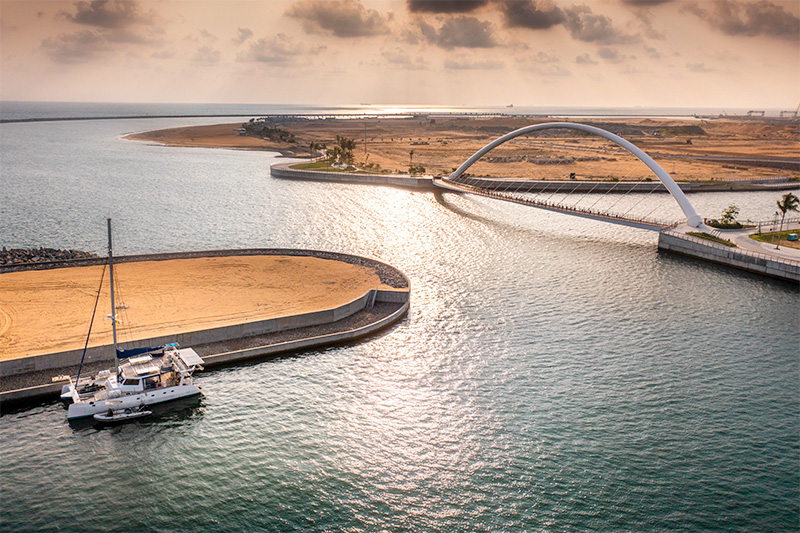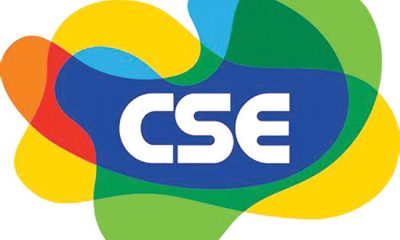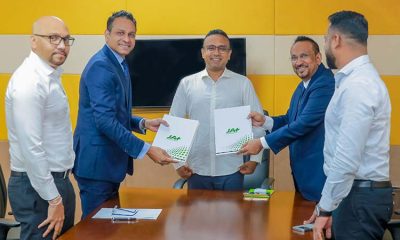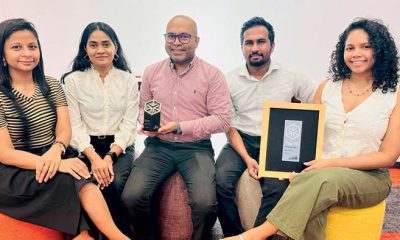Business
‘Leaders must take care of their people in this pandemic’

Excerpts from a virtual interview
By Dinesh Weerakkody
Celebrated HR Guru Prof. Dave Ulrich who has helped shape modern HR in this interview emphasizes the fact that leaders must learn to harness uncertainty to be able to help countries and organizations to prosper in the unknowable new normal.Prof. Ulrich has consulted and done research with over half of the Fortune 200 companies and worked in over 80 countries.
Dave, It’s a long time since I’ve seen and spoken to you. What has changed since we last met?
Much has changed and until January 2020 the world was moving along and then in January the corona crisis hit and the entire world went through dramatic change overnight.
The global pandemic has heightened HR’s relevance to business. In this context, what should HR be doing to help people and organizations deliver increased value and what are the new practices that will emerge post crisis?
Let me lay out HR’s value creation with three very simple insights. No. 1, we have to create and capture value for others. The goal of HR is to create value for our employees, for our organizations, for our customers, for our investors and for our communities. So HR’s number one issue is to continue to create value both inside and outside the firm. No. 2, to create value to all stakeholders, HR must deliver great people, organizations, and leadership. No. 3, HR has to continue to reinvent itself, through digital HR, through technology, through analytics. In brief, HR’s agenda is to create value outside into all stakeholders, through talent, organization and leadership and by transforming HR .
What has been the impact of the pandemic on HR skills and competencies? What new skills will HR professionals need to develop post pandemic?
We have studied HR competencies for 30 years, through 7 rounds of research and we are now starting the 8th round. As we look ahead, we envision five HR competencies that we think will have an impact. No 1- is information asymmetry, or learning how to source information in this new world even when working virtually. . Number 2- is being able to separate signal and noise. In this world there is a lot of noise, as evidenced with a lot of activity, emails, ideas, and books. How do we sift important signals that matter from this noise, particularly around emotional wellbeing. Therefore the challenges are ;No. 1 information asymmetry. No. 2 separating noise from signal and No. 3. beginning to build integrated solutions, it’s not isolated staffing, training & compensation initiatives, HR needs to integrate these specialists activities into integrated solutions. . No; 4 is social responsibility and Citizenship. HR now needs to be much more aware of and connected to social responsibility.. No; 5 is guidance. HR should access information that offers guidances. It’s not enough to just describe an organization practices- like culture. We should be specific about the “right” culture, given the situation. Those are the 5 skills we are studying and we want to find out how they deliver value to stakeholders. Information asymmetry, separating noise from signal, managing social responsibility and corporate citizenship , integrated solutions and then organisation guidance.
What has technology really done to empower engagement in this crisis?
Technology, like almost everything else, offers good news and bad news. The good news is that technology enables digital information that supports good decision making. The bad news is that technology can be used to distance people form each other. We have seen 4 phases of digital affecting HR. The first phase of digital HR, is efficiency. So technology allows us to be more efficient to do learning or staffing or compensation efficiently. The second phase is innovation. Josh Berson who is the expert in this area said there are 2,700 new digital HR apps, some of which are good and some are silly. The next (3rd) phase of HR digital that is coming is information guidance. How do we use digital to tell us more of what we do? It’s no longer enough to do a best practice. We have to do a practice that creates an impact on key results. Then, the fourth phase, is experience or connection which is where I think HR needs to focus in this pandemic. Technology should enable us, one- to be more efficient, two- to innovate, three for information management and four to have a better experience and that’s where I think we are heading with technology.
Moving on, today what would HR look like in the new economy?
When people tell you that they know the new normal. My advice to you is turn around and run. I don’t know what the new normal is? I think we live in a world full of uncertainty and our job in HR is to harness that uncertainty. Our message should be; don’t be threatened by the uncertainty, but to discover the opportunity in it.Out of the uncertainty that comes from this crisis will emerge a whole new way to behave and do things. These new behaviors must focus on creating value for all stakeholders. Number two, HR will have to add greater value to the people, organization and leadership. Number three, HR will have to reinvent HR, through transforming the HR department, offering integrated HR solutions, and upgrading HR professionals. HR leaders unlike ever before are expected to help their people and organizations navigate this crisis.
What will the new world of work look like post covid?
I think we’re going to see a new ecosystem where and how we work; I think we used to worry about where we work. When I get up in the morning, I go to work, I’m at work and I go home from work. I think that’s gone, or less likely. For example – I could be in my condominium, my office, my car, a coffee shop, or a hotel. No matter where we work we have to be connected through our shared values, and the boundaries of work are not physical, the boundaries of work are the values we share that create value for our customer. So the boundaries of work are shifting from ‘place’ to ‘values’. This means that no matter where one works there are expectations that shape the boundaries of work. These expectations are about the value created for the customer.
What type of skills will disappear in the next two or three years?
I don’t think skills simply disappear, they build on each other. For example, the skill of connection is going to evolve. It is not going to be connection face to face, I think it’s going to be virtually. How do you and I connect even though we’re 12 hours apart? Your night time, my morning even though we’re in different places, but I can still begin to feel that connection, so the reskilling is building on the past. That is, we still set KPIs and goals, but virtually. We communicate, we communicate virtually. Therefore we will build on the skills that we’ve learned in the past.
What are the three things that HR can do to deliver value to a CEO in this crisis?
Take care of your people. Help them feel emotionally cared for by showing empathy. Caring for them can create a great organization that serves customers. Talent, organization and leadership can all of which serve customers. For example, many have said our people are our most important asset, and I think it needs to evolve to our people are our customers’ most important asset. Do our people do what our customers want? Our culture is the identity of our firm in the marketplace. Our leaders must have the competencies that create value for our customers. Everything we do in HR, talent, organization and leadership should create value in the marketplace.
You talked a lot about the organization guidance system (OGS). Tell us a little bit more about this and how can we make use of OGS?
We have found that organizations are spending about 1% of their annual revenue on people and organization initiatives in talent, leadership, capability, and HR, but they are not clear about how to optimize these investments to deliver results. The guidance system will provide answers to questions like: What talent, leadership, organization, and HR initiatives will have the most impact on employee, business, customer, investor, and community result? To answer this question, we can build on decades of research to guide people and organization initiatives that deliver results. Our work shows 5 outcomes -employee, business, customers, financial, and community and there are 36 initiatives, which equal 180 cells (5 outcomes * 36 intiatives). Business and HR leaders need to know which of these 180 cells they should invest in. Simply go to www.rb.ai and take the short survey for each pathway to get a free report on where to focus to deliver key results. This report offers invaluable guidance on where to priorities your people and organization initiatives.
Dave, finally what is your message to CEOs of Sri Lanka?
I’m going to give the same message to the CEOs that I would to all HR and other professionals; here’s my answer to CEOs in Sri Lanka and to others, the best year of your life is the next 12 months. The best is yet ahead. Sri Lanka has a history of resilience and success, of continually rebounding and coming back. My friends and CEOs, my friends in business, my friends in HR, the best is yet ahead, the next 12 months will be the best ever.
Business
‘Port City Colombo makes progress in attracting key investments’

Port City Colombo, a multi-service Special Economic Zone (SEZ) and a regional financial centre and business hub, has made significant progress in capturing key investments, as the project gears up for a tenacious drive to attract prospective land development and business set-up investors from the South Asian, APAC, and Middle Eastern regions before the end of 2024, a Port City Colombo press release said.
The release added: ‘With a strong emphasis on capturing high-value Foreign Direct Investments, Port City Colombo has on-boarded approximately forty-one companies registered as Authorised Persons (AP’s), as approved by the Colombo Port City Economic Commission. Fifty-two percent (52%) of the project’s Marina District, which includes South Asia’s first-ever luxury yacht marina and 5-star hotel, has further already attracted investment. Reputed international and local corporate entities, including Asiri Port City Hospital (Private) Limited, TIQRI, CODEGEN INNOVATIONS, 99x Technology AS, IVIVA PTE Ltd, Echelon Trade (Pvt) Ltd, and Port City BPO (Pvt) Ltd, have been additionally designated as Businesses of Strategic Importance.
‘Approximately more than twenty prospective investors are presently in the pipeline to register as Authorised Persons, demonstrating strengthened confidence in Port City Colombo’s positive outlook as a competitive regional investment hotspot.
‘Positioned within the Colombo Port City Special Economic Zone, Port City Colombo presents a low-risk financial environment that enhances the ease of doing business for global investors in Sri Lanka, whilst being economically ring-fenced against domestic macroeconomic challenges. This visionary FDI investment destination also showcases a thriving commercial ecosystem and liveable master-planned city, enabling a diversity of businesses to set up operations against the backdrop of transactions in 16 different international currencies with no capital or exchange controls, 100% foreign ownership, and fiscal incentives for 25 plus years.
‘Port City Colombo provides investors two primary options of investment: land development investments, which include residential and commercial property development, and business set-up and investments, which encompass a variety of opportunities in IT/ITes, financial services, hospitality/tourism, logistics, and so forth. Commercial entities, who are interested in investing or setting up business operations, are required to become qualified as an Authorised Person, which is defined as any individual or entity permitted by the Colombo Port City Economic Commission (CPCEC) to conduct business within the vicinity and from the area of authority of the Colombo Port City Special Economic Zone.
‘As Port City Colombo progresses forward with its vigorous AP and BSI drive, the project aims to fulfil the ambition of transforming Sri Lanka into an attractive global investment destination, whilst emulating the successful international economic models of Dubai and Singapore. For more information about our investment opportunities, please visit www.portcitycolombo.lk. ‘
Business
LOLC and Hayleys dominate share market trading; turnover touches Rs. 2.5 billion

By Hiran H.Senewiratne
CSE activities were positive yesterday due to LOLC Group counters dominating the market. But there was an acute increase in Hayleys shares as well due to the company being one of six companies that tendered bids for the Sri Lanka Airlines divestiture, market analysts said.
Both indices moved upwards. The All Share Price Index went up by 77.50 points while S and P SL20 rose by 11.1 points. Turnover stood at Rs 2.5 billion with one crossing. The crossing was reported in Colombo Fort Lands, which crossed 1 million shares to the tune of Rs 30 million; its shares traded at Rs 30.
In the retail market top seven companies that mainly contributed to the turnover were; Browns Investments Rs 400 million (66 million shares traded), LOLC Finance Rs 318 million (44 million shares traded), Capital Alliance Rs 150 million (2.4 million shares traded), CIC Holdings Rs 97.9 million (1.3 million shares traded), Central Industries Rs 93.1 million (716,000 shares traded), Agsta Rs 92.9 million (11 million shares traded) and Dolphin Hotel Rs 91.3 million (2.2 million shares traded). During the day 207 million share volumes changed hands in 26000 transactions.
Yesterday the rupee opened stronger at Rs 300.00/40 to the US dollar in the spot market after closing at Rs 300.50/301.00 on Monday, dealers said. The rupee closed at 302.00/50 to the US dollar on Friday.
Bond yields were flat as buyers awaited the next development in sovereign bond re-structuring, market participants said. There were both positive and negative sentiments among bond investors, dealers said. Meanwhile, a bond maturing on 15.12.2026 was quoted at 11.32/40 percent from 11.30/40 percent on Monday. A bond maturing on 15.09.2027 was quoted at 11.92/12.00 percent, down from 11.95/05 percent. A bond maturing on 15.12.2028 was quoted flat at 12.15/25 percent.
Business
India is no ‘big brother’ to Sri Lanka, H.C. Santosh Jha says in myth-busting speech

by Sanath Nanayakkare
India is referred to as a ‘big brother’ state for the South Asian region as it is the largest and most powerful country in South Asia.
However, the Indian High Commissioner to Sri Lanka Santosh Jha delivering a speech in Colombo on April 21, busted this myth adequately.
Speaking at the official launch of the “Ramayana Trail – The Sacred Mission” Project organised by the Supreme Global Holdings Group at Hotel Taj Samudra, Colombo, the Indian High Commissioner said that ‘Ramayana Trail’ reaffirms his oft-repeated assertion that the two countries are civilisational twins sharing the same antiquity.
“From this it follows that we are not after all big or small sisters or brothers but one of the same age and antiquity with neither being small or big vis-a-vis each other,” he said, addressing the audience that comprised a delegation from India led by Swami Govind Dev Giriji.
Speaking further, the Indian HC said,” Your presence here confirms that the deep connection between the people of two countries goes back several centuries into antiquity. A time when people and ideas were moving across seamlessly and without the modern impositions that sometimes constrain and restrict easy travel and connections between our peoples. We were reminded of this connect recently by President Ranil Wickremesinghe who mentioned at the launch of the Universal Payments Interface or the UPI in Sri Lanka, which will allow Indian tourists to make payments in Indian rupees in Sri Lanka, there is evidence of the use of each other’s coins or ancient currencies in both India and Sri Lanka deep into our antiquity.”
“We all know today that the Ramayana trail stretches from India to Sri Lanka. That this is so was not so well known to many in our two countries even a decade or so ago despite references to this in our ancient epics such as Ramayana and Mahabharata. I myself discovered this first hand when I came to Sri Lanka in 2007 and worked at the Indian High Commission for three years.
‘’I had the pleasure of visiting these places in Sri Lanka multiple times during that period.”
“So far, in my present tenure too I have visited some of these places and more are part of my plans in the near future. I am, therefore, glad that today the idea of Ramayana trail has caught up the imagination of the people on both sides of the Palk Strait.”
“Promoting tourism is an important objective of both our countries. For Sri Lanka, in particular, it has been an important source of economic activity and promotion of Ramayana trail holds a significant promise.”
“I must also recall that our leaders have pledged to promote the Buddhist circuit and the Ramayana trail in both our countries in the Vision Document that was issued when our leaders – President Ranil Wickremesinghe and Prime Minister Narendra Modi – had their summit meeting in New Delhi in July 2023. I must add that this is the vision of our leaders that guides our actions today in all areas.”
“India already contributes more than 1/5th of the tourist arrivals into Sri Lanka. India is also the largest source of tourist traffic to Sri Lanka. Unlike others, Indian tourists also visit both Buddhist and Hindu places of worship. They are also attracted to historical sites existing across Sri Lanka. In that sense, they are more diversified in their choice of sites and places they visit in Sri Lanka. The economic value of attracting Indian tourists into Sri Lanka, therefore, is greater as the benefits of their travels go to a larger cross section of people dependent on tourism business and to those who are located in all the provinces in Sri Lanka.”
“In other words, Indian tourism has a larger regional spread in Sri Lanka and so its benefits too are similarly more dispersed and distributed. This is unlike other tourists, who are mostly interested in adventure and beach tourism and therefore their business benefits have more limited spread and distribution.”
“Our effort to establish the land bridge, on which we have begun our joint work, promises to further provide fillip to our ongoing efforts to promote tourism between our two countries. No doubt that it will be a game changer. It will, of course, bring many benefits to communities along the alignment of this connectivity but more specifically, it will make Ramayana and Buddhism tourism easier and more alluring to people on both sides. I must also add that the Ramayana trail also confirms the deep people-to-people connect and shared civilisational antiquity of India and Sri Lanka.”
“Our relationship is special and unique in this respect. For us, we have to cooperate as that is the only option. We must stand hand-in-hand with each other in good as well as difficult times. We cannot rest with just coming to assist one another episodically but must remain engaged at all times in all spheres.”
“Our commitment to one another has to be the greatest as there is no other relationship that is more vital, critical and natural as the one we have with each other. In fact, in modern political and economic systems, too, we are similar. We are democratic, open polities and societies and open market economies.”
“Our socio-economic profile as a low middle income country also entails that we can offer each other the benefits of our respective successful experiences, which no other society, economy or polity can do, especially those which are not governed by these democratic norms.”
-

 Business4 days ago
Business4 days agoCEAT Kelani launches three new radial tyre variants in ‘Orion Brawo’ range
-

 Business6 days ago
Business6 days agoDialog-Airtel Lanka merger comes centre stage
-

 Business3 days ago
Business3 days agoCeyline Travels and MBA Alumni Association of University of Colombo sign MOU
-

 Business6 days ago
Business6 days agoSLFEA appoints JAT as a Facilitation Partner for training painters to provide overseas employment opportunities
-

 Business4 days ago
Business4 days agoHayleys Fabric celebrates triple triumph at ISPO Textrends Spring/Summer 2026
-

 Business5 days ago
Business5 days agoUrgent appeal from Sri Lankan exporters on rupee appreciation
-

 Business3 days ago
Business3 days agoMaldivian to launch direct flights to Colombo
-

 Sports4 days ago
Sports4 days agoHello Madras, ‘ai api kaluda?’



























